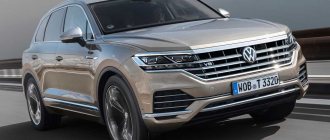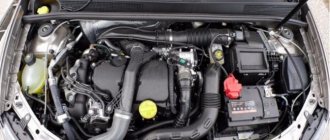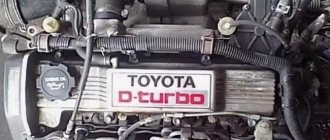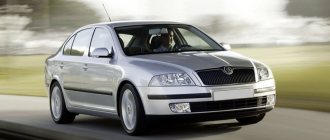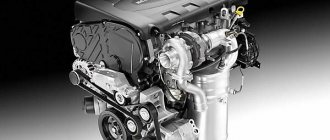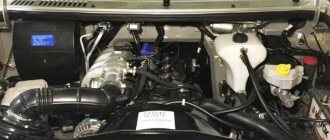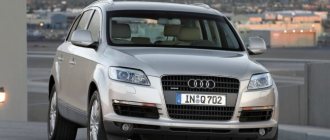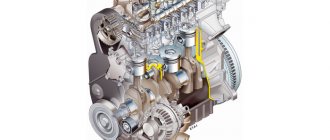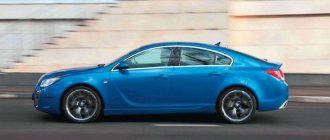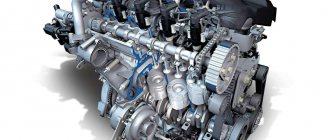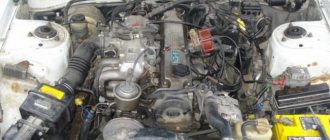Flight magazine Peugeot 408 1.6 HDi (2012)
Good day, forum members!))
So I became the proud owner of a Peugeot 408! How I chose it is a different story. I sold my 2006 Getz. and was thinking about what kind of car to buy within 350t.r. For this money I could buy either a VAZ or a used foreign car. To be honest, I didn’t want to buy a used car anymore. I put off the question of buying a car for a while; I rode the bus for a week. And then the mother-in-law and father-in-law asked to pick up a car with high ground clearance for about 600 thousand rubles. Well, I immediately remembered the Fluence and the Peugeot 408.
My wife and I decided to stop by the Peugeot dealership. For myself, I didn’t even consider the Peugeot 408 initially, I saw it a couple of times on the street, and I didn’t like the look. So, we went into the salon. I see there is a huge sedan, basically nice). I sat in the salon and frankly liked it. The plastic is soft, everything is very nice and pleasant to the touch. I sat behind me from behind - I practically crossed my legs) I am 184 cm tall. Well, the trunk was generally impressive - it’s huge. Then the manager tells me that there is a special loan program: 4.08% per annum for 2 years with a 50% down payment.
We decided to take a test drive. At first at 120 horsepower on the mechanics. In terms of dynamics, I was not at all impressed - worse than my Getz 1.4. But I really liked the sound insulation and the way the suspension absorbs potholes. We were immediately offered to test the 1.6 turbo 150 hp. with a torque of 240 nm on a 6 speed automatic. This is what I liked! Excellent dynamics, efficient automatic machine. The manager casually said that diesel is almost as good in dynamics. I decided to take diesel. There was no diesel test drive car. Ordered Access black diesel. This is the basic equipment, there is power steering, front ESP, electric mirrors, air conditioning, ABS, 2 PB, central locking with automatic locking, audio preparation. In principle, the required minimum. And for frosts - filaments in the blower system.
I have long wanted a diesel, because of the high torque at low speeds and low consumption. But all automakers are asking a lot of money for diesel modifications. And here for 637,000 a full-fledged diesel engine in a large car. Maintenance costs are the same as for gasoline ones. Oddly enough, we no longer visited other salons. After the purchase, I already looked at other cars on the websites and realized that I was not mistaken. Probably the deciding factors in the purchase were the attractive credit program and the fact that it was a diesel engine.
After 2 weeks the car arrived))) I paid 50% + 40,000 comprehensive insurance and MTPL and 20,000 winter wheels in Taganka. Wheels 215 55 R16 wide)
How nice it is to smell a new car! Looks great in black! I left the salon and went straight to the gas station. It’s unusual to drive up to a diesel pump. On lines 95 and 92, I’m alone on the DT).
At the time of writing this review, the mileage is only 250 km in the city. Average consumption, taking into account traffic jams, warming up, and short trips, was 7.5 l/100 km. I assessed the heating system; warm air starts blowing within a minute. So far nothing rattles, there are no creaks or crickets, I’m happy with everything)))
Well, now a few words about diesel. Still, diesel is power. I can’t even believe that this engine (only 1.6 liters) accelerates a heavy car so easily. From 2000 rpm, very good pickup begins. The maximum speed was up to 3500, then it’s a pity, it’s still a break-in) I accelerate without straining, gasoline cars are left behind. The good news is that for such dynamics you do not need to turn the engine. In 2nd gear, without pressing the gas pedal, the car itself drives up a rather steep hill). The gears engage clearly, but the lever travel is a bit long. I haven’t driven more than 100, but I think 6th gear wouldn’t hurt.
I really like the diesel roar of the engine). Especially at low speeds. Almost like big diesel SUVs.
Let's see how it starts in cold weather. The manufacturer promises start-up down to -37. Oh, I also forgot - in the winter, a plastic plug is placed on the lower air intake. Comes with the machine.
I think that after this diesel engine it will be difficult to persuade me to buy a gasoline car)
The most popular engine for Peugeot 408 cars
Taking the EP6 out of the equation, we can say that more often than others, the TU5JP4 gasoline engine with a displacement of 1587 cm3 was installed under the hood of production versions of the 408 sedan. The commercial marking of the unit is NFU. Years of production: 2000-2015. The inline four-cylinder engine is equipped with a block cast from cast iron. There are 4 valves per block. The block head is much lighter, made of aluminum alloy. Valve clearances are adjusted using hydraulic compensators.
The motor is equipped with advanced systems and mechanisms:
- distributed injection from Bosh;
- electric drive of the throttle valve unit;
- plastic intake manifold of fixed length.
The not too playful engine develops a peak power of 115 l/s. Its distinctive feature is the significant difference in gasoline consumption in the city and on the countryside:
- in the city - 10.0 l.;
- outside the city - 5.8 liters;
- combined - 7.4 l.
The maximum torque that this unit is capable of developing is 150 Nm.
The most common complaints about this motor are about the electronics. In addition, the timing belt drive is not very reliable. The motor is reliable, maintainable and has a full range of spare parts for service. This is very important, especially in relation to the cast iron cylinder block. The total engine resource is 240 thousand km. Practical application indicates that this figure is much higher.
no_copyright
The DV6CM engine (a continuation of the DV6C branch, the junior e-HDi diesel of the 308s and 3008s) is one of the most modern in the rich diesel line of the PSA group. Power - 115 hp at 3600 rpm, maximum torque - 254 Nm at 1750 rpm (275 Nm in Overboost mode). But this is not the greatest pride of the French.
When it comes to the problems of gasoline engines of the PSA-BMW collaboration, the French begin to look sideways at their Bavarian partners. But this is disingenuous - and their spark-ignition engines have never been reliable. But you can’t find fault with diesels. They say that if a diesel Peugeot comes to the dealer with any problem, all the servicemen come running to look at the wonder - failures are so rare. Engineers assure that the new DV6CM is the most reliable power unit in the PSA engine range. And, it seems, they are not lying about their hearts. The key message of the Pezhovtsy rhetoric is based on three words: reliability, maintainability, economy.
Advantages and disadvantages
Each engine has its own advantages and disadvantages, which will be discussed below.
DW12TED4
In the case of this model, the main advantages are:
- Powerful and at the same time economical motor. The engine does not consume a lot of fuel, for which it is appreciated by many car enthusiasts.
- Demand and popularity in the automotive market.
- Availability of a huge resource, as well as organization of uninterrupted operation with timely and proper care of the engine.
- Possibility of use with both manual and automatic transmissions.
Among the disadvantages it should be noted:
- The presence of a FAP filter, which is not always convenient.
- Regular failure of the system that regulates engine performance. This model uses the SWIRL system.
- The need to use only high-quality diesel fuel. Otherwise, the unit will quickly fail.
- Availability of balancer shafts.
We can conclude that there are not so many disadvantages compared to the advantages and they are not particularly significant. Overall, the engine is considered reliable, and its assembly is of high quality. And you can extend the life of the unit if you regularly inspect the condition of its elements.
DW12BTED4
As for this power plant, the advantages are:
- Use of reliable elements.
- Development of high power.
- Low fuel consumption.
Among the problems are:
- Diesel particulate filter clogged.
- The occurrence of errors in the operation of turbines: sometimes over- or under-blowing occurs.
- The need to use high-quality fuel.
- Mandatory regular replacement of an expensive fuel filter. It is worth noting that if replacement is ignored, the injectors may fail, which will entail a significant increase in the cost of repairs.
Finally, not every service center is ready to repair this diesel engine due to its complex design.
DW12C
Among the advantages of this motor it is necessary to highlight:
- low fuel consumption;
- demand among car manufacturers;
- use of quality parts.
The main troubles in engine design are:
- A clogged particulate filter. The owner of a car equipped with this unit will need to regularly clean this structural element so as not to cause overheating and failure of the internal combustion engine.
- Turbines in which errors occur.
- Clogged piezo injectors. In addition, it is worth noting that dismantling them can be very difficult, so not every service will agree to carry out such repairs.
Also, while using the engine, problems arise with replacing the fuel filter, which also quite often becomes clogged or becomes unusable.
DW12MTED4
The main advantage of this motor is the use of high-quality elements in the design. In this regard, the main disadvantages appear as:
- fuel filter clogging;
- complicated repair of the fuel system with piezo injectors;
- under- or over-blowing of turbines during their operation.
Also, the particulate filter often becomes clogged, which is why the car owner will need to regularly replace this element. If such a problem is ignored, various troubles may arise in the form of failure of more serious parts of the engine structure.
DW12UTED
This model is considered extremely durable, and this is its main advantage in comparison with other engines in this family. In addition, long-term performance can be ensured by regular inspection of the engine condition, as well as timely replacement of the fuel filter.
The disadvantages of DW12UTED include:
- the difficulty of dismantling the injectors when cleaning or replacing them is necessary;
- presence of strong vibrations. However, this disadvantage can be easily eliminated if you replace the standard engine mounts with better ones.
As for the particulate filter, it causes virtually no problems, especially if it is removed immediately.
Engines 1.4-1.6 TU - simple and good
The TU series of engines was developed for the smallest Peugeots. The first generations of TU debuted in the mid-1980s. Firstly, the 1.4 8V engine was offered, which you can find on popular models: 206, 207 and even the compact 307.
This engine has a 16-valve variant, but despite sharing many features, it already has a different designation (ET3, the Peugeot 206 debuted in 2004) and is slightly less well rated (it happens to burn more oil than it should). The TU5 engine (item 1.6) also has a version with 8 and 16 valves.
The first has 95 hp, and the 16V version has power: 109, 115, 118 or 125 hp. This is also a very popular device that you will find in many popular models. In any case, PSA still uses the engine in the sedans: Citroën C-Elysée and Peugeot 301, but it is an upgraded version, designated "EC5", which has variable valve timing and complies with Euro 6 emissions standards. Generally, there are no serious objections against TU engines - typical failures are ignition coil failures, throttling and minor leaks. It should be noted, however, that many of them already have a high mileage and may require repairs.
Models in which you will find the 1.4-1.6 TU engine
Peugeot 206 - This model used almost all recommended TU units: both 1.4 (75 HP) and 1.6 (89 and 109 HP). There was also 1.4 16V (ET3). Small Peugeot with a 109 hp engine. accelerates to 200 km/h, sprint to “hundreds” takes 9.9 seconds. Average fuel consumption is 6.9 l/100 km.
Peugeot 207 - On the 207 model you will find engines of the TU series (1.4 8V and 1.6 16V) and ET3 (1.4 16V). “207” with a 1.4-liter gasoline engine producing 73 hp. accelerates to 170 km/h, and acceleration from 0 to 100 km/h takes 14.5 seconds. Average fuel consumption is 6.3 l/100 km.
Similar Audi Q7 3.0 TDI: a universal fighter
Peugeot 301 - Despite this version being misleadingly labeled as a 1.6 VTi, it is actually an upgraded TU5 engine. With the 301 manual gearbox, it can accelerate to 188 km/h and accelerate to 60 mph in 9.4 seconds. Average fuel consumption is 6.5 l/100 km. “Automatic” burns 0.8 l/100 km more.
Engine 1.4-1.6 TU - what you like: cheap spare parts, high strength, simple design, relatively low fuel consumption, good performance, suitable for the CIS. What we don't like: manual transmission malfunctions, severe exhaustion of existing cars with TU engines, ignition coil failures.
